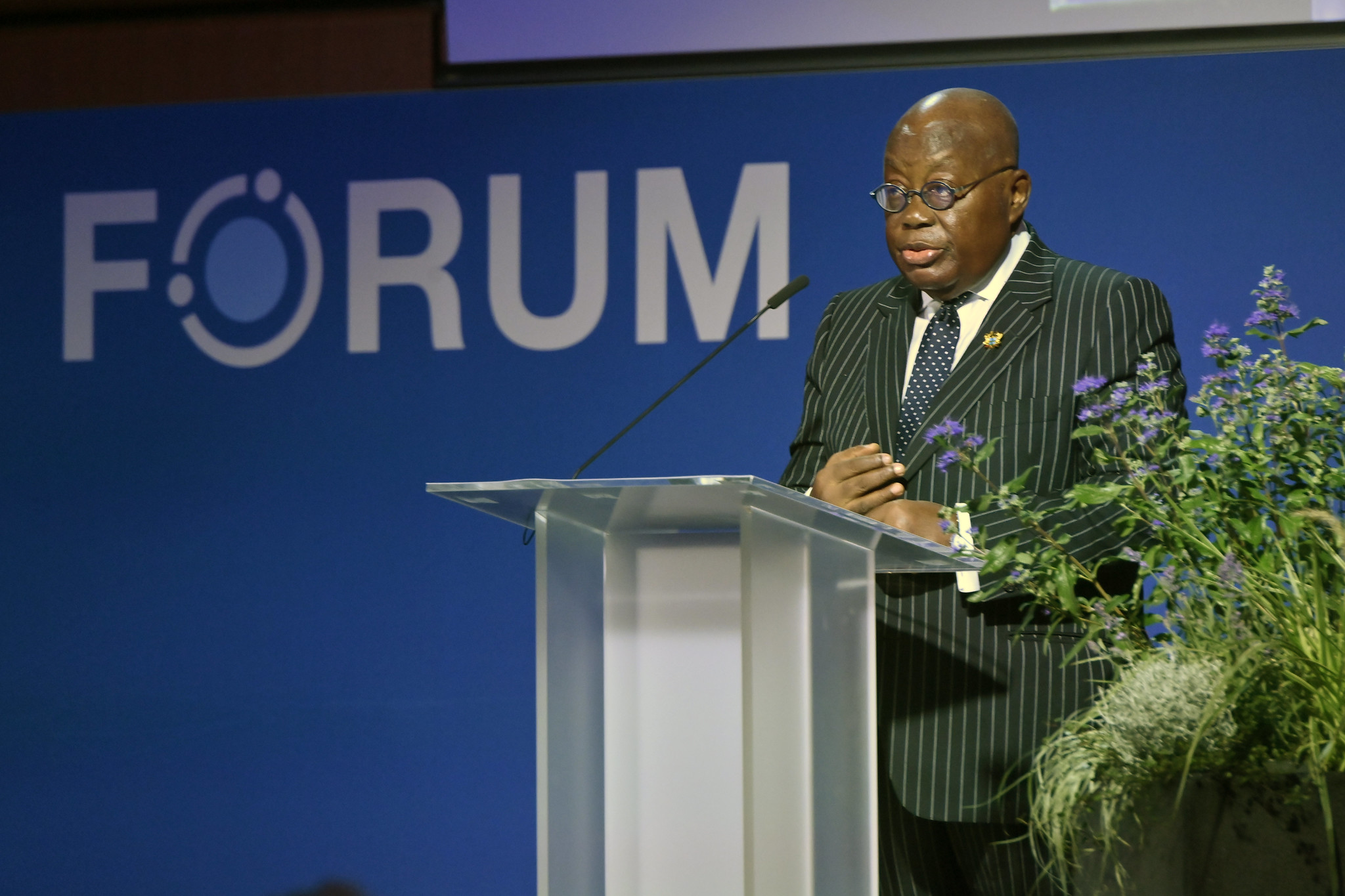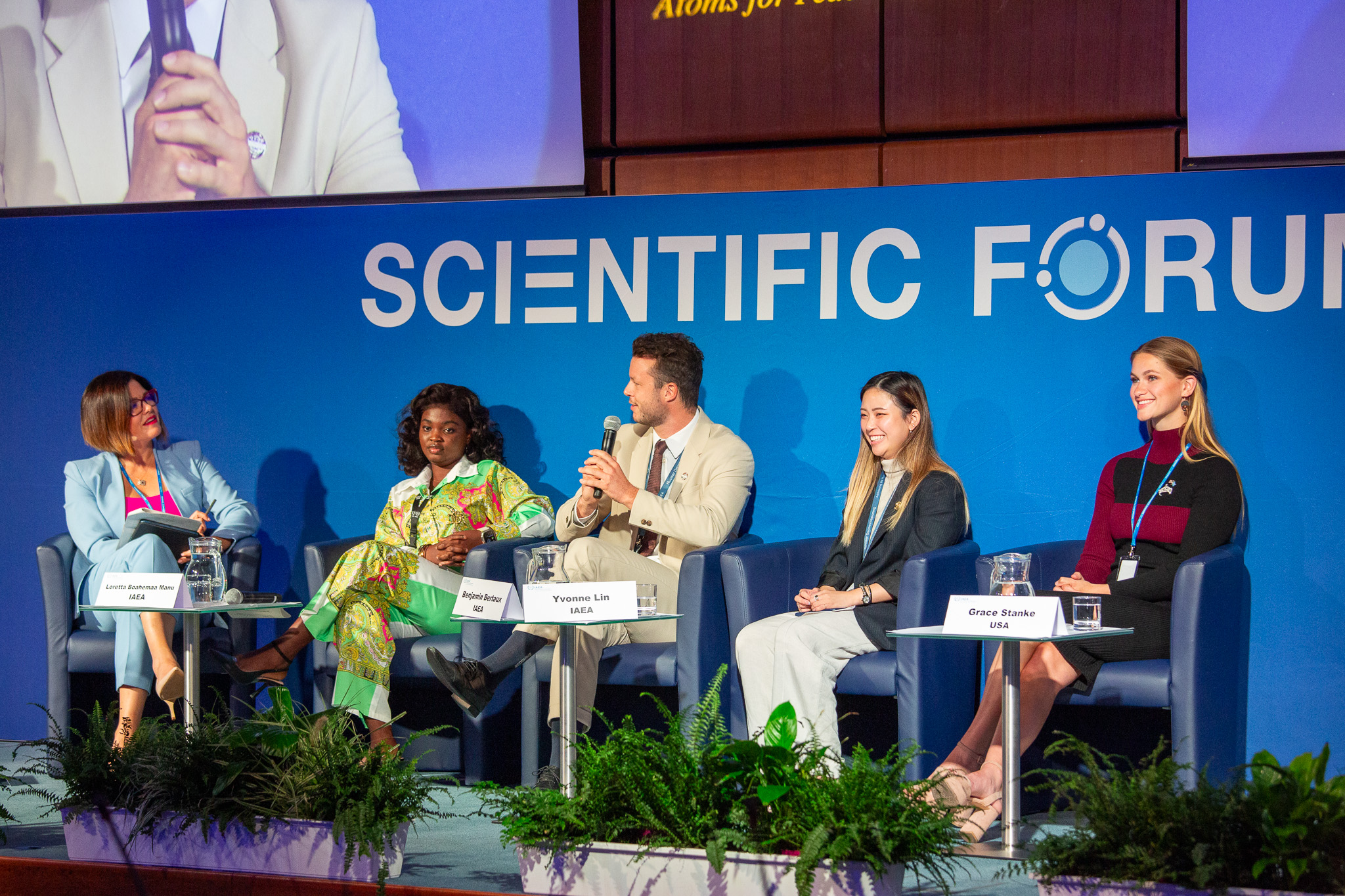There is growing global interest in nuclear energy, and countries are acting on this interest. In the opening session of the Scientific Forum, the President of Ghana, Nana Akufo-Addo, shared his plans for the inclusion of nuclear energy in the country’s electricity generation mix. “We’re committed to a clean, equitable energy transition that harnesses the full potential of all low carbon sources, including nuclear power,” President Akufo-Addo said. “Nuclear power will play a significant part in this transformation.”
Ghana is analysing small modular reactors (SMRs) and their potential for rapid deployment for clean and affordable energy. “We are working with industry experts to study the feasibility of deploying this new technology in Ghana,” President Akufo-Addo said.
In the United States of America, where nuclear power provides the single largest source of clean energy, “reaching our 2050 net zero goals depends on at least tripling our nuclear energy capacity to 300 gigawatts or more,” said US Secretary of Energy Jennifer Granholm. The US Government has invested “billions of dollars in the future of nuclear energy, creating historic tax incentives for investments in new facilities and production of nuclear energy,” and the development of a domestic fuel supply chain is underway, she added
The US Department of Energy recently released Pathways to Commercial Liftoff, a set of reports to accelerate the deployment of clean energy technologies, including advanced nuclear reactors. Advanced reactors are key to reaching net zero goals because they can help to decarbonize energy intensive industries, such as hydrogen production, desalination, district heating, petroleum refining and fertilizer production, Secretary Granholm said. She encouraged more countries to look at nuclear energy as a sustainable, long term investment and to harness “the power of the atom for a new era of peace and prosperity in what is potentially the greatest peace project of our time – a net zero world.”
The Republic of Korea is also investing in growing its nuclear sector. Since 2000, Korea has been implementing its Nuclear Power System Development Plan, with a specific focus on developing advanced reactors, and as a result, in 2012, Korea’s first SMR – SMART – received the standard design approval from the Korean regulator, said Lee Jong-Ho, Minister of Science and ICT in the Republic of Korea. “Now we are developing an even more advanced and innovative SMR based on SMART technology,” he added.
The Korean Government believes that the private sector should take the lead in technological innovations. “This is especially true for the SMR sector, which aims to replace fossil fuels in industries such as seawater desalination and space exploration,” Minister Jong-Ho said. The Korean Government is launching the Korea SMR Initiative to transfer SMART and other advanced nuclear technologies to the private sector in order to help demonstrate and commercialize new reactors. “To kick start these efforts, starting next year, the Government will collaborate with the relevant companies to invest in developing high temperature gas reactors designed for industrial process heat with applications such as hydrogen production and other uses,” he said.
In Morocco, the Government is considering adding nuclear power to its energy mix to ensure a reliable energy supply. “Morocco places a distinct focus on small modular reactors due to their numerous advantages, including the flexibility for integration,” said Leila Benali, Morocco’s Minister of Energy Transition and Sustainable Development, in a video statement to the Forum. “They hold significant promise for diverse applications, such as combined heat and power generation and seawater desalination.”
Minister Benali also announced that Morocco’s National Centre for Nuclear Energy, Sciences and Technology has been designated as an IAEA International Centre Based on Research Reactors (ICERR), enabling it to function as a global learning platform. “Morocco's national infrastructure that is now reinforced by this recognition is open for the benefit of the African continent with a focus on capacity building,” she said.
For the past 40 years, Sweden has expanded different forms of renewable energy, with wind power providing a significant share of electricity, and biomass replacing oil and coal for district heating and industrial processes. “What was forgotten, though, was that the power system is very sensitive and that it has to work technically. It's not just about adding terawatt hours,” said Sweden’s Vice Minister for Climate and the Environment, Daniel Westlén. Considering the requirement for dispatchable energy to meet demand, when and where needed, as well as for demand to be met without carbon emissions, the options are limited. “Nuclear energy is the only option available,” he added.
To reach climate and net zero goals, studies have estimated a doubling or tripling of nuclear energy capacity by 2050. “Can the world build 20 or even 40 gigawatts of nuclear energy per year? I would claim it is possible. We’ve done it before,” Vice Minister Westlén said. In the 1980s, more than 180 reactors were under construction globally, and more than 30 gigawatts were added in one single year, he explained. Sweden deployed 12 large reactors between 1972 and 1985. While “climate change is the greatest challenge humanity has ever faced… we are in possession of the tools that we will need to solve this,” he concluded.
Last year, French President Emmanuel Macron announced a programme to build six nuclear reactors, as well as a programme dedicated to nuclear and innovation with small and advanced modular reactors. “We need energy, which is at the same time cheap, affordable and sustainable. And that's not so easy to solve,” said François Jacq, General Administrator of the French Atomic Energy Commission. “That's why we need innovation.” Innovation will come in many forms – in applications, approaches and technologies – and will also attract the future generation to the nuclear field.
“We will also have to innovate in the field of cooperation, in partnership. We have to invent new forms of cooperation. We have to invent new forms of research and technology organization,” General Administrator Jacq said.




